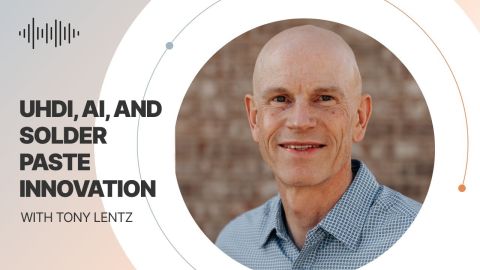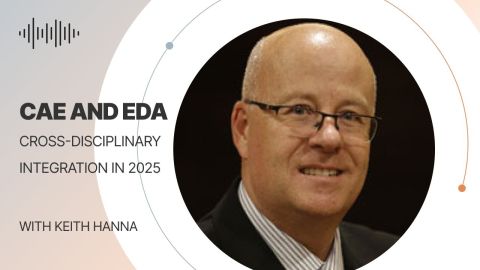Gerry Partida on Wrap Plating
Gerry Partida is back to talk to us about wrap plating and via filling and what the benefits, requirements and drawbacks of this technology are, and what you need to know about designing these and how this technology drives cost.
Listen to the Podcast:
Download this episode (right click and save)
Watch the Podcast:

Show Highlights:
- Gerry is the Director of Engineering at Summit Interconnect with 35 years of experience in the PCB industry, of which he spent 2 decades in boardshops.
- Were there indicators in your youth that you would end up in an engineering profession? Growing up NASA was in the middle of the Apollo program and being mesmerized by that was the beginning of it all.
- Definition of wrap plating: Wrap plating wraps copper onto the surface whenever we have a blind via or epoxy-filled hole, ensuring safe expansion and contraction during assembly.
- Benefits of wrap plating: saves real estate and protects via and with high speed digital, it speeds up response times.
- IPC specs for wrap plating: IPC 6012 for rigid boards, 6013 for rigid-flex, and 6018 for RF. IPC4761, titled Design Guide for Protection of Printed Board Via Structures.
- The minimum wrap thickness at the knee of the hole changed recently - but the thicker the wrap, the harder it is to etch. Studies have shown that as long as you have some wrap, it’s reliable.
- By plating, epoxy-filling and plating over, we eliminate the chance of the solder going down a via next to a BGA pad.
- What are ‘butt joints’? There are two stages to plating: drill only the epoxy-filed or blind via holes, plate them targeting 4-tenths of a mm; plating across the entire surface and some in the hole and stop. Then cover everything on the outer layer except for the hole, leaving an opening just slightly bigger than the original hole and continue to plate until minimum required copper is reached. After this the resist is stripped off and the hole filled with epoxy - if the hole is too small or aspect ratio is too great, filling becomes a problem.
- Talk to your manufacturer about the optimum drill size and the requirements for epoxy-filling to prevent dimples or protrusions.
- If you have a blind via job, you must specify that they are to be filled and plated over.
- Gerry shows a hand tool that measures copper thickness around all the panels. It is used to verify, after planarizing, the lowest location and verify and cross-section to ensure that you are safe on thickness specs.
- A board shop will build in verification processes which take time - when you add epoxy-fill to a job, there are eight major manufacturing steps added to the job, which takes 24 hours in the quickest board shop. Basic board manufacture has approximately 26 to 28 steps.
- Make sure your fabricator does all the required steps for filling in-house.
- Minimizing wrap cycles creates greater consistency in your RF performance on an outer layer.
- Peel strength: when we epoxy-fill a hole it creates a smooth surface at the hole which weakens the peel strength.
- Thermal vias - conductive pastes do not conduct as much heat as copper - forget thermal paste, ask your manufacturer to plate 2mm of copper in the hole, just make the hole a bit bigger.
Links and Resources:
Learn, connect, and get inspired at AltiumLive 2019: Annual PCB Design Summit.
Related Resources
Thank you, you are now subscribed to updates.









